It is the last day of Navratri, the Hindu festival celebrated with great pomp and splendour over nine nights. The fireworks outside my window oblige with drumrolls for what promises to be an evening I will remember for years to come.
In the next few seconds, as — the internet’s beloved chef — takes a few seconds to unmute his mic and adjust his camera, giving me a clear view of him in his elegant New York City home, I can’t help but smile at this ‘pinch-me’ moment.
Right from the outset, Khanna is chipper; no one (except probably the general manager at ‘Bungalow’, Sameer Bhatt) would guess he has pulled an all-nighter. Well into the wee hours of the morning, Khanna was attempting to replicate the intricate wings of a peacock’s feathers onto the surface of a piece of coconut barfi (Indian sweet).
Four decades of culinary experience ensured he aced the task. And now for replicating the same onto a hundred-odd pieces! Known to push the envelope, Khanna does justice to this reputation when he says, “I wanted each feather to be exactly alike.”
Sharing how the plumage was meant to be reminiscent of the mandirs (temples) in Indian homes, Khanna was keen that every guest at ‘Bungalow’ — his dream restaurant project launched in New York in March this year — return home that day with a , spot the delicate mor pankh (peacock feather), and smile.
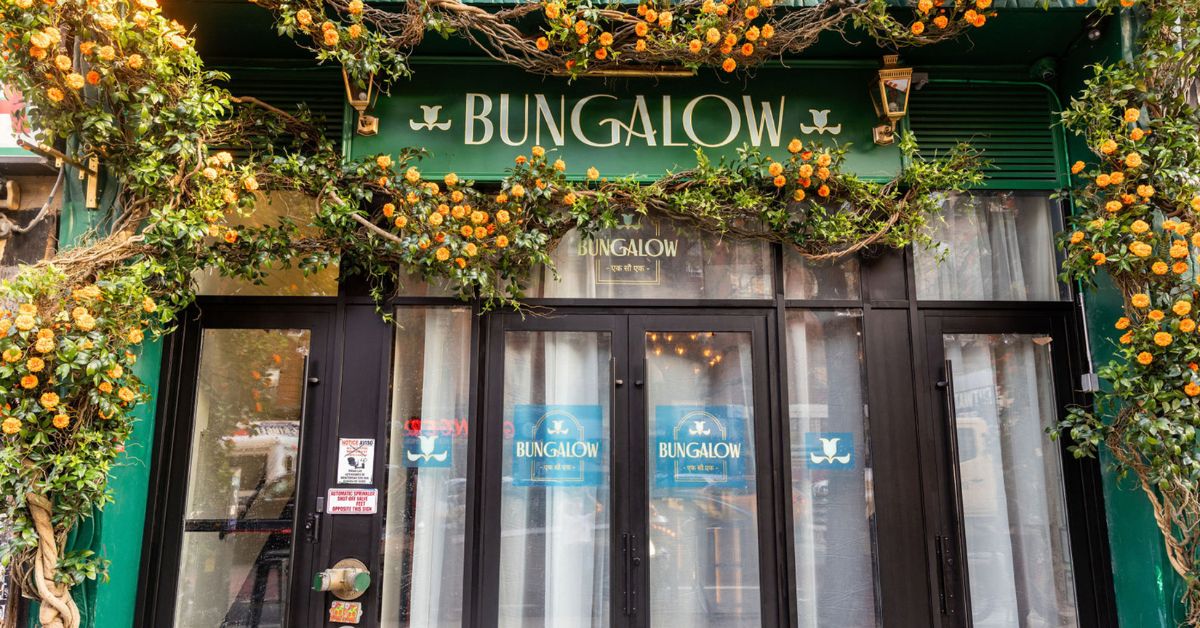
Chef Vikas Khanna created ‘Bungalow’ in New York as an ode to street vendors of India and the food he grew up eating in Amritsar
He is positively brimming with joy to announce the barfis had the desired effect; as many Indian immigrants found themselves transported by the mini square-shaped time capsules from America to the epicentre of the festive madness in India.
Revered on the culinary circuit, Vikas Khanna’s prowess transcends the kitchen.
The multi-hyphenate has authored over 37 books — with his most recent ‘Imaginary Rain’ (2023) being turned into a Shabana Azmi starrer — has directed three films and two documentaries; been one of the judges at MasterChef India; and helmed several restaurants including New York’s iconic ‘Junoon’ — one of the first Indian restaurants to .
But despite this compelling bio, Khanna’s primary identifier is that of a proud Indian. And this is reflected in everything — from the tadka (spices heated in hot oil) that makes its way into his curries to the sparkle in his eyes when he speaks about life back in his beloved hometown, Amritsar.
Khanna’s culinary mind has a lot to occupy it. Memories of serving the who’s who of the world — he has been the chef du jour multiple times for the Obama family, while also working closely with food mogul Gordon Ramsay — find space right next to nostalgic memories of binge sessions involving rounds of tikkis (potato patties) from ‘Mathura ki Tikki’ in Amritsar.

Among Chef Vikas Khanna’s fondest memories are those with his family and the time he spent in Amritsar, his hometown
“I distinctly remember how this [tikki] was the of my cousins who would visit us from Kolkata and Mumbai. Nothing was done to make the potatoes crisp. Instead, they were fried to a great degree and then pressed on a hot tava (pan) laden with ghee. In the late 70s, each tikki was around Rs 20 — which was a lot of money! But the crispiness of those potatoes is very nostalgic for me. I still snack on them when I go to India,” shares Khanna.
You’d be interested to know that this spot is one of the seven distinguished ones dotting the ‘food map’ devised by Khanna’s mother to celebrate his homecoming. The locales are set in stone and nothing is up for debate.
Of course, her son’s global fame means the duo can no longer feast on tikkis and chaat ( in peace without 500-odd people thronging to get a glimpse of their favourite chef or (if they’re lucky) a selfie. And Khanna is ever-obliging, animatedly chatting up each vendor he visits. “After all, they were my foundation,” he smiles.
This perfectly segues his next thought, “We often take things for granted when we have them.”
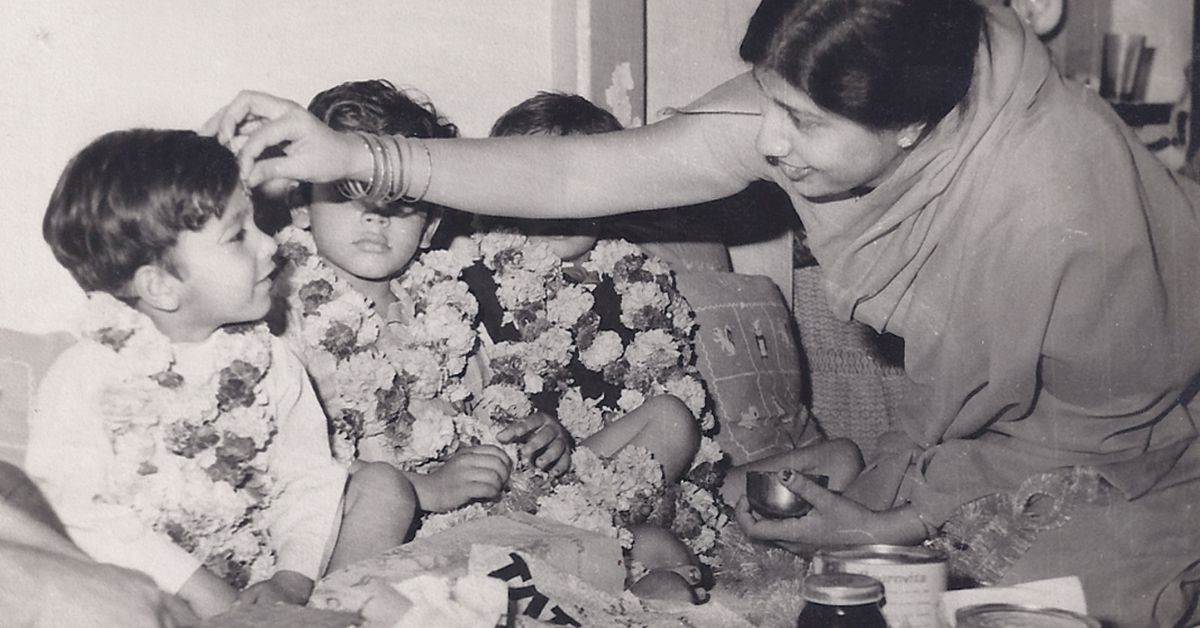
Chef Vikas Khanna treasures his earliest memories of feasting on the food prepared by his grandmother and mother — experiences that he will remember forever
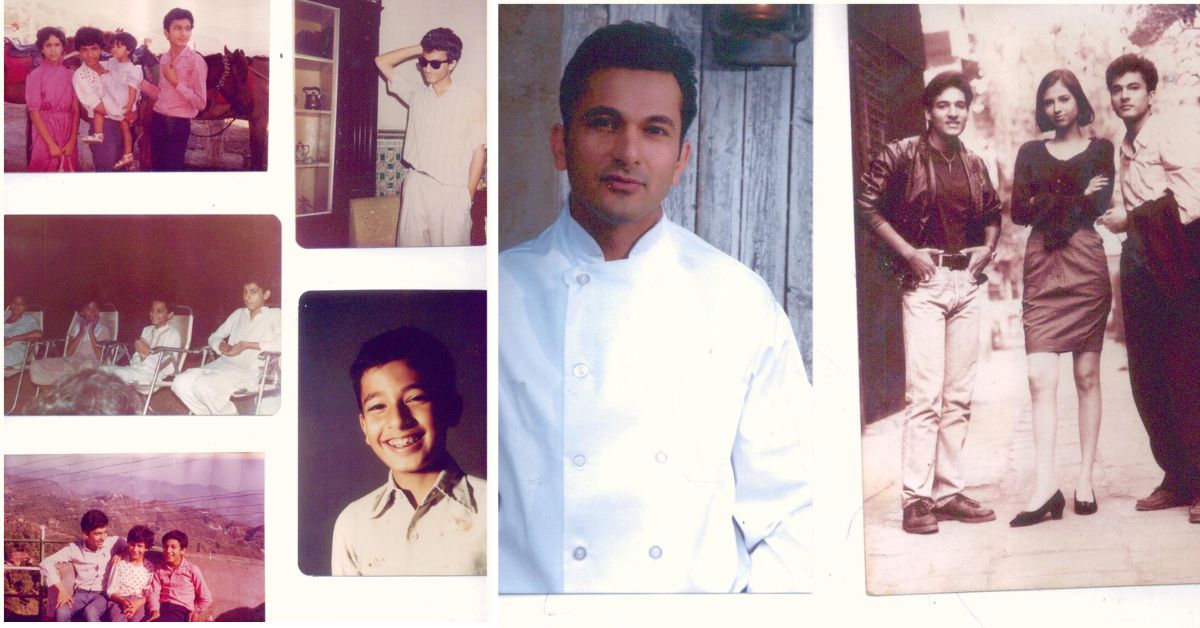
Pictures from Chef Vikas Khanna’s growing-up years
A read between the lines tells me food is not the only thing on his mind. The women in Khanna’s life — his mother, grandmother, and sister — have been instrumental in the making of the man and chef he is; their love forms the bedrock of his childhood and youth.
“Many in my team are first-generation Indian Americans. When describing visits they made back home during their summer vacations, they refer to their grandmothers as ‘healers’ for the sheer magic their food evoked.” Khanna attributes this to the simplicity of things. “If you look at it, there was nothing attached to our except for love; no expectation, no judgement. You were set free when having that food.”
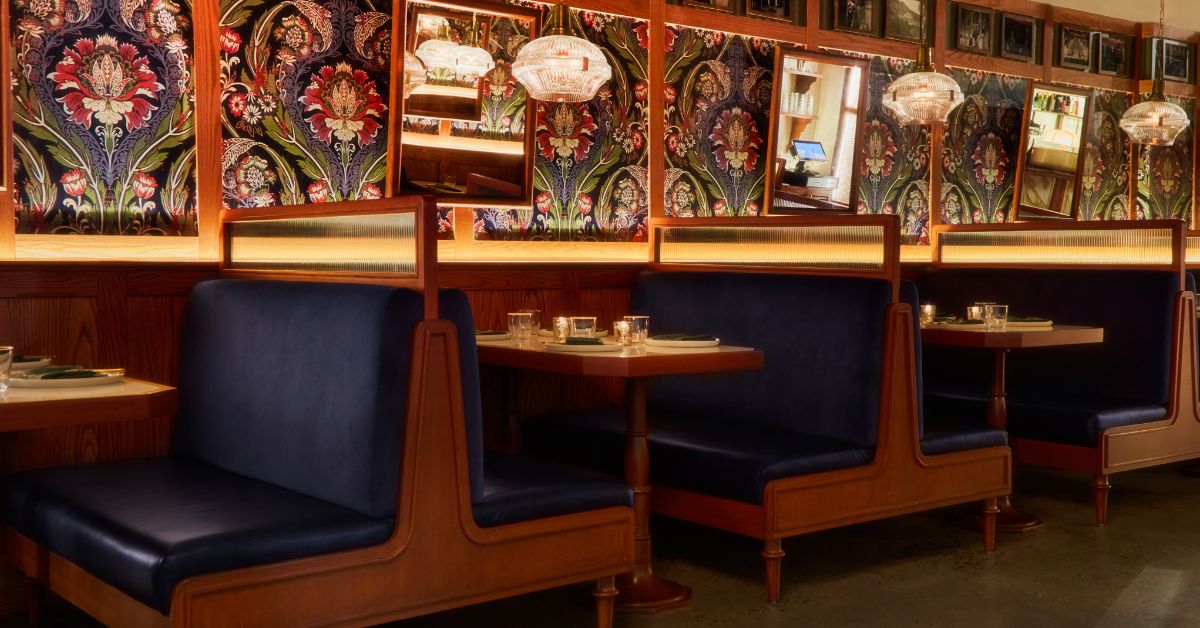
The interiors of Bungalow have been done keeping Indian aesthetic in mind; the restaurant is an invitation to experience Indian culture
And today, the menu at Bungalow in East Village, New York, reflects these sensibilities. Time and again, the culinary virtuoso has reiterated how his latest — and last — gastronomic endeavour is an ode to the street vendors of India and the crafts they have perfected over generations. “I hail from a small town, a small community where street food was the only way. In my growing up years, there was just one restaurant in Amritsar. But it was the food of street vendors that made us go ‘wow’,” he shares.
Borrowing from the English word for bangla (single-story home), coined during India’s colonial past, Bungalow is an , culture, and exceptional cuisine. With a menu featuring a repository of time-honoured recipes documented from across India’s 28 states in all its diversity and hues, the space invites you to reimagine classics like never before.
Securing a reservation at this grand establishment is no easy feat, more so once the festive season in India sets in (October to December). Chef Vikas Khanna’s habit of going to lengths to recreate the Diwali magic is not lost on foodies.
Proof of this lies in my conversation with him. Stumped while trying to procure parijaat flowers (a common feature in Indian homes during Diwali), he was pleasantly surprised when a guest, observing his frenzy, made him his very own bunch of parijaat — from crochet! The flowers now occupy centre stage at the restaurant. Coupled with the sweet smells of their real counterparts that deck every nook, and the — including the Banarasi puri (a North-Indian snack) and baingan bharta (a dish made with roasted eggplants) — they create a semblance of festive cheer.
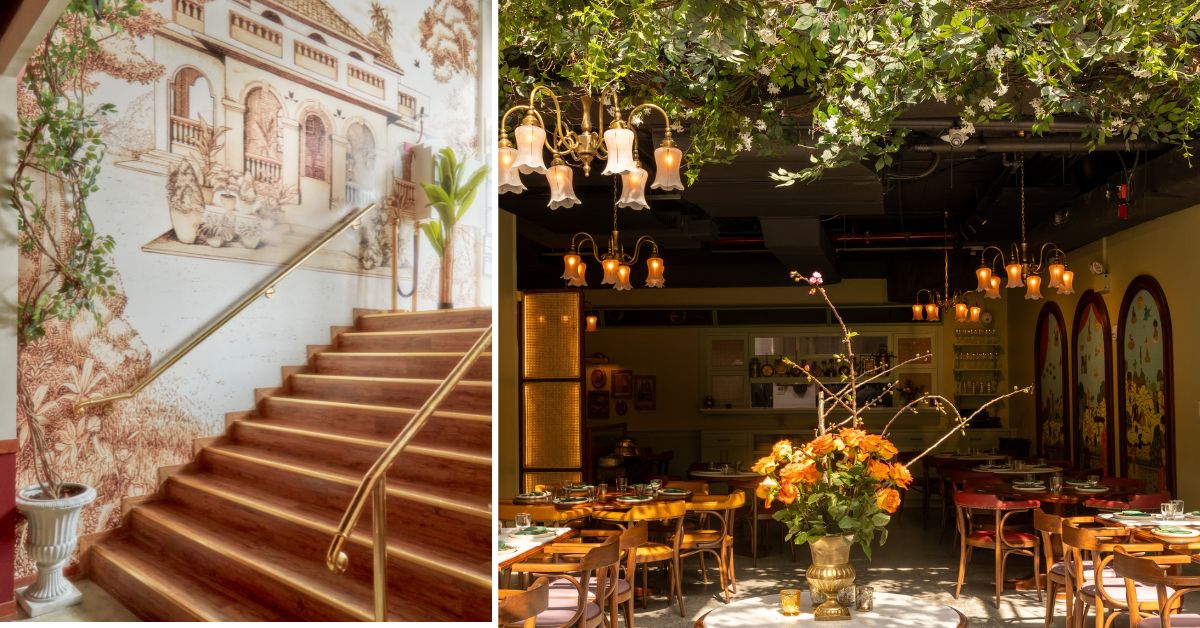
The decor and interiors of Bungalow reflect Indian cultural sensibilities
Khanna has lived in America for over 25 years now. He’s clocked more milestones than his younger self ever dreamed possible. But in hindsight, he says it was a deep value system he traded this for. “We’ve lost the comfort of being around home. The Indians who come to Bungalow are those who have achieved so much beyond their comfort zones, but are ultimately looking for that emotional connection to something.” The created in memory of his sister, is meant to fill that gaping hole in the lives of many immigrants.
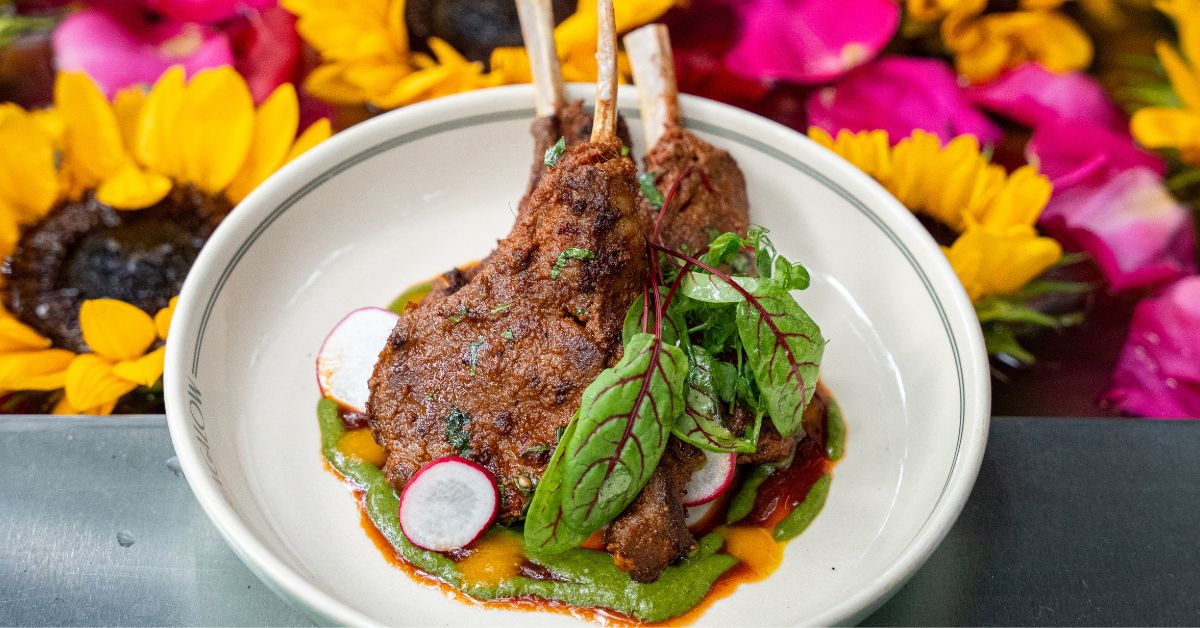
The dish ‘Ammi’s Lamb Chops’ is served at Bungalow and is quite a hit with the restaurant’s patrons
“She [my sister] would always tell me that I had a sacred gift [cooking]. Through Bungalow, every Indian living in America can know that they have someone who is theirs.” Many a night when a youngster or silver-haired guest breaks down after biting into a mithai and being reminded of home, Khanna joins them at the table, shedding a silent tear of his own.
Because he too, like them, is reminded of the piece of his heart he has left back in India.
Do you think slow sustainable cooking has a bright future? I ask Khanna.
“Lata Mangeshkar hamesha Lata Mangeshkar rahengi (There will always be something special about Lata Mangeshkar),” he replies, then falls silent, allowing the words to explain themselves.
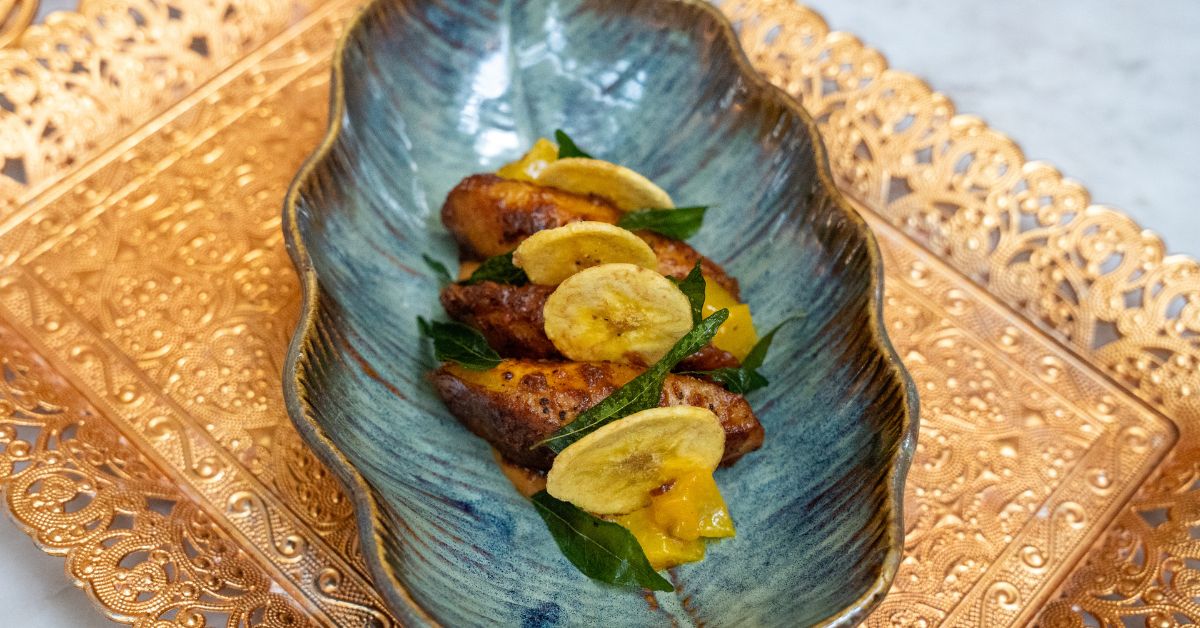
The ‘Ghee Roasted Plantain’ is one of the specialities served on the Bungalow menu
It’s a fast-paced world, you’ll agree. But Khanna is a firm believer in time-tested concepts. At Bungalow, the food is not meant to sit still and look pretty but is an interlocutor, urging its patrons to take pride in their culture. “While mentoring youngsters, I tell them ‘Choose your destiny but choose the last point and then trace your steps back’.” He encourages them in the direction of instead of wanting to popularise Western food — whose roots they aren’t as familiar with.
“I have always maintained that it’s amazing to have successful businesses, but my only question is what do you represent,” he remarks.
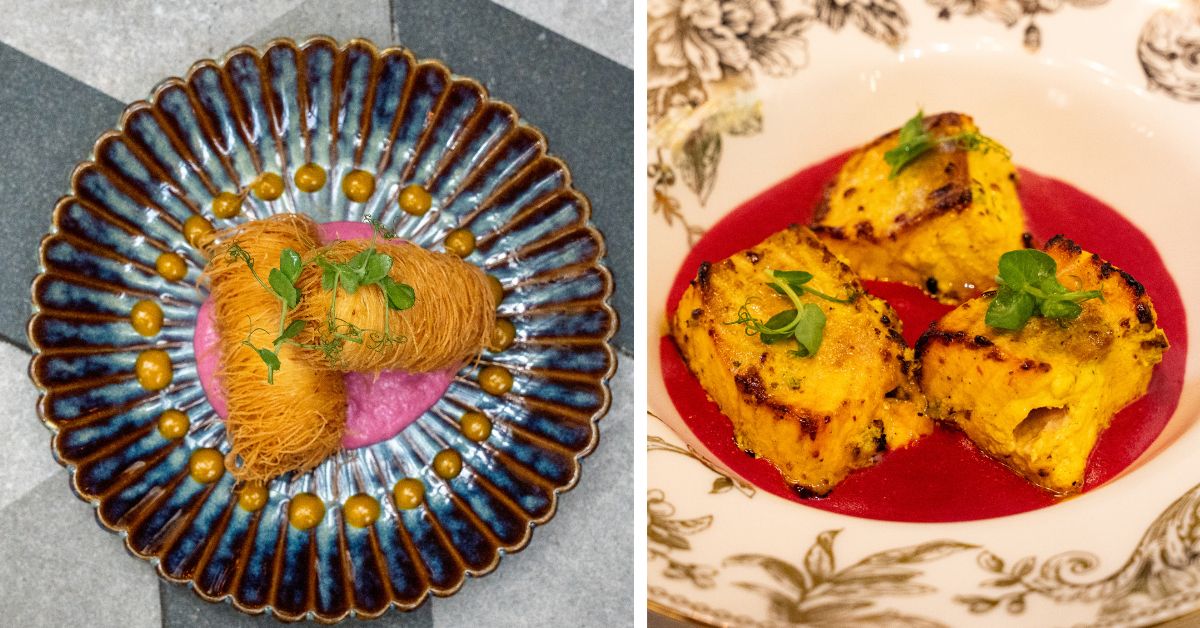
The ‘Yoghurt Kebabs’ (L) and the ‘Kokum Salmon’ (R) showcase how indigenous ingredients come through excellently in fusion recipes
Khanna’s culinary mood board is decked with the experiences he’s gained working across cities. The journey has been coloured with wins and losses, both vital to his roaring success. So, when guests remark on how his sandesh (a sweet made with milk, sugar and flavouring) mirrors the original Kolkata version, Khanna smiles. Whoever knew days spent writing letters to restaurants in Kolkata, requesting a chance to work with them; and multiple train journeys back and forth would play such an integral role? “Because of my experience across India, my food reflects the entire country.”
Whether it is the Amritsari chole (a made with chickpeas) that is peppered with Khanna’s childhood memories, or the chicken Chitranee marinated in his love for North India, each dish is a celebration of flavour.
But, it wasn’t all highs.
As the darkness of the years in between engulfs Khanna for a moment, he shares how a ray of hope always shone through in the form of his sister’s words to him — “God is testing you so much every single day. I hope when it’s time to distribute happiness, God puts you in the front of the line.” He shares, “When I wasn’t getting good jobs, I thought it was my bad luck. A lot in my journey was broken. That’s how there are so many pieces. They are all coming together now.”
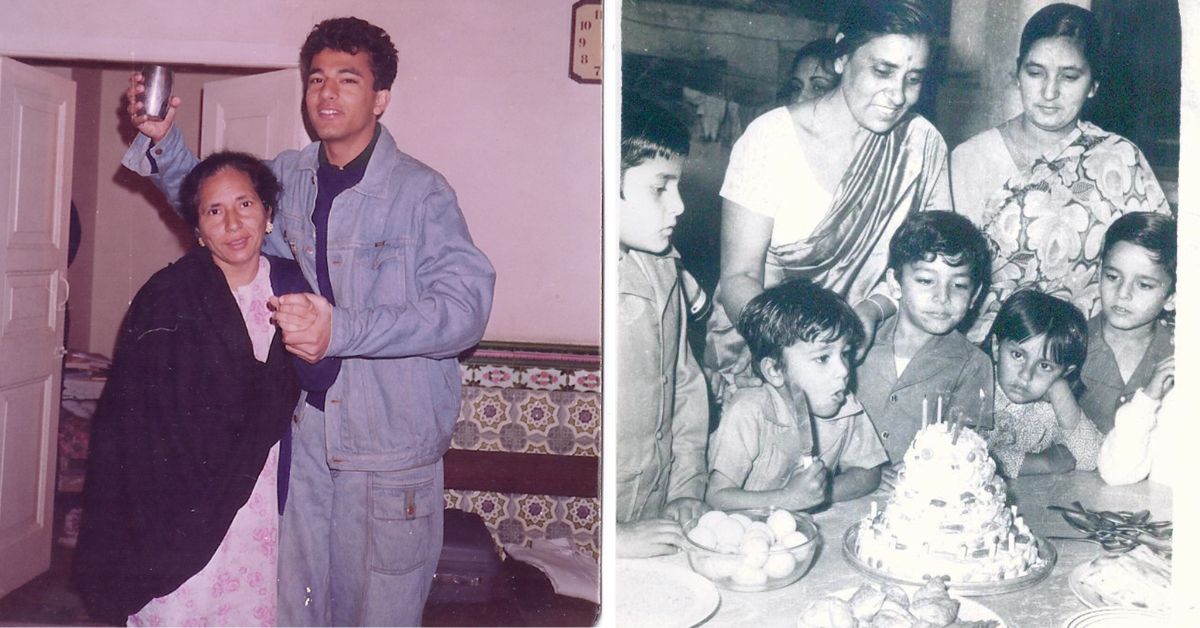
From the archives: Vikas Khanna with his family whom he credits for being his biggest inspiration
Recently, one of his Instagram posts wondered aloud, “Who knew that this kid with bunny teeth, strange feet, zero confidence, zero grades in school and always the paranoid kid in the [would head a] restaurant [that] will be honoured in the list of 50 BEST RESTAURANTS IN AMERICA by The New York Times. Who knew?”
No one saw it coming, but fate definitely did.
On a lighter note, Khanna shrugs aside, revealing the space behind him, allowing me a minute to appreciate the exquisite taste with which his living room is done, and also, as he shares, the spot for Bungalow’s very first tasting session. He follows this fun fact with a hearty anecdote of how that day saw a room full of guests — the likes of Jay Shetty and Jimmy Rizvi — declaring pineapple for the win, thoroughly floored by the humble pineapple curry.
Khanna, who doubted how this simple rendition would work the room was pleasantly surprised to see it becoming the protagonist of the meal. He then goes on to divulge the recipe, a trade secret I can’t possibly share, but can affirm is brilliant.
What’s astounding is how the simplest ingredients find a stage in Khanna’s . Here’s an example. “I recreated aloo vadis (potato snacks) with purple potatoes. It was a very interesting spin. The hero was the hing (asafoetida).” One wouldn’t ever imagine the humble (and often taken for granted) hing to get the limelight, but with Khanna, anything is possible. It is amazing how simplicity and finesse convene in each dish touched by his hands.

Through Bungalow, Chef Vikas Khanna is attempting to create a space where Indian Americans can have a sense of belonging
The more I learn about chef Vikas Khanna, the more fascinated I am. For instance, he shares how, along with his family, a 90s Bollywood release formed the crux of Bungalow’s USP. His grandmother’s enthusiasm to watch Hum Aapke Hai Kaun (1994) and a theatre filled to capacity taught Khanna to never underestimate the market. “We often assume the market is for youngsters, but one’s credibility lies in how they can attract grandparents. That is a testament to your craft. You have to penetrate the market with your authenticity,” he says.
I want to keep listening to chef Vikas Khanna. But it is unfair to deprive the guests at Bungalow of the pleasure of his company. No, he’s not planning to rest despite the all-nighter.
Even at 53, and at the pinnacle of success, Khanna spends 16 hours a day working (Read: doing what he loves). “I don’t want the artist in me to die and be taken over by commerce. The day I take off my apron, people should know it’s been a long journey to be here.”
Edited by Pranita Bhat; Pictures source: Chef Vikas Khanna
In the next few seconds, as — the internet’s beloved chef — takes a few seconds to unmute his mic and adjust his camera, giving me a clear view of him in his elegant New York City home, I can’t help but smile at this ‘pinch-me’ moment.
Right from the outset, Khanna is chipper; no one (except probably the general manager at ‘Bungalow’, Sameer Bhatt) would guess he has pulled an all-nighter. Well into the wee hours of the morning, Khanna was attempting to replicate the intricate wings of a peacock’s feathers onto the surface of a piece of coconut barfi (Indian sweet).
Four decades of culinary experience ensured he aced the task. And now for replicating the same onto a hundred-odd pieces! Known to push the envelope, Khanna does justice to this reputation when he says, “I wanted each feather to be exactly alike.”
Sharing how the plumage was meant to be reminiscent of the mandirs (temples) in Indian homes, Khanna was keen that every guest at ‘Bungalow’ — his dream restaurant project launched in New York in March this year — return home that day with a , spot the delicate mor pankh (peacock feather), and smile.

Chef Vikas Khanna created ‘Bungalow’ in New York as an ode to street vendors of India and the food he grew up eating in Amritsar
He is positively brimming with joy to announce the barfis had the desired effect; as many Indian immigrants found themselves transported by the mini square-shaped time capsules from America to the epicentre of the festive madness in India.
Revered on the culinary circuit, Vikas Khanna’s prowess transcends the kitchen.
The multi-hyphenate has authored over 37 books — with his most recent ‘Imaginary Rain’ (2023) being turned into a Shabana Azmi starrer — has directed three films and two documentaries; been one of the judges at MasterChef India; and helmed several restaurants including New York’s iconic ‘Junoon’ — one of the first Indian restaurants to .
But despite this compelling bio, Khanna’s primary identifier is that of a proud Indian. And this is reflected in everything — from the tadka (spices heated in hot oil) that makes its way into his curries to the sparkle in his eyes when he speaks about life back in his beloved hometown, Amritsar.
For Vikas Khanna, all roads lead home
Khanna’s culinary mind has a lot to occupy it. Memories of serving the who’s who of the world — he has been the chef du jour multiple times for the Obama family, while also working closely with food mogul Gordon Ramsay — find space right next to nostalgic memories of binge sessions involving rounds of tikkis (potato patties) from ‘Mathura ki Tikki’ in Amritsar.

Among Chef Vikas Khanna’s fondest memories are those with his family and the time he spent in Amritsar, his hometown
“I distinctly remember how this [tikki] was the of my cousins who would visit us from Kolkata and Mumbai. Nothing was done to make the potatoes crisp. Instead, they were fried to a great degree and then pressed on a hot tava (pan) laden with ghee. In the late 70s, each tikki was around Rs 20 — which was a lot of money! But the crispiness of those potatoes is very nostalgic for me. I still snack on them when I go to India,” shares Khanna.
You’d be interested to know that this spot is one of the seven distinguished ones dotting the ‘food map’ devised by Khanna’s mother to celebrate his homecoming. The locales are set in stone and nothing is up for debate.
Of course, her son’s global fame means the duo can no longer feast on tikkis and chaat ( in peace without 500-odd people thronging to get a glimpse of their favourite chef or (if they’re lucky) a selfie. And Khanna is ever-obliging, animatedly chatting up each vendor he visits. “After all, they were my foundation,” he smiles.
This perfectly segues his next thought, “We often take things for granted when we have them.”

Chef Vikas Khanna treasures his earliest memories of feasting on the food prepared by his grandmother and mother — experiences that he will remember forever

Pictures from Chef Vikas Khanna’s growing-up years
A read between the lines tells me food is not the only thing on his mind. The women in Khanna’s life — his mother, grandmother, and sister — have been instrumental in the making of the man and chef he is; their love forms the bedrock of his childhood and youth.
“Many in my team are first-generation Indian Americans. When describing visits they made back home during their summer vacations, they refer to their grandmothers as ‘healers’ for the sheer magic their food evoked.” Khanna attributes this to the simplicity of things. “If you look at it, there was nothing attached to our except for love; no expectation, no judgement. You were set free when having that food.”

The interiors of Bungalow have been done keeping Indian aesthetic in mind; the restaurant is an invitation to experience Indian culture
And today, the menu at Bungalow in East Village, New York, reflects these sensibilities. Time and again, the culinary virtuoso has reiterated how his latest — and last — gastronomic endeavour is an ode to the street vendors of India and the crafts they have perfected over generations. “I hail from a small town, a small community where street food was the only way. In my growing up years, there was just one restaurant in Amritsar. But it was the food of street vendors that made us go ‘wow’,” he shares.
Borrowing from the English word for bangla (single-story home), coined during India’s colonial past, Bungalow is an , culture, and exceptional cuisine. With a menu featuring a repository of time-honoured recipes documented from across India’s 28 states in all its diversity and hues, the space invites you to reimagine classics like never before.
Bungalow: A ‘home’ for Indian immigrants
Securing a reservation at this grand establishment is no easy feat, more so once the festive season in India sets in (October to December). Chef Vikas Khanna’s habit of going to lengths to recreate the Diwali magic is not lost on foodies.
Proof of this lies in my conversation with him. Stumped while trying to procure parijaat flowers (a common feature in Indian homes during Diwali), he was pleasantly surprised when a guest, observing his frenzy, made him his very own bunch of parijaat — from crochet! The flowers now occupy centre stage at the restaurant. Coupled with the sweet smells of their real counterparts that deck every nook, and the — including the Banarasi puri (a North-Indian snack) and baingan bharta (a dish made with roasted eggplants) — they create a semblance of festive cheer.

The decor and interiors of Bungalow reflect Indian cultural sensibilities
Khanna has lived in America for over 25 years now. He’s clocked more milestones than his younger self ever dreamed possible. But in hindsight, he says it was a deep value system he traded this for. “We’ve lost the comfort of being around home. The Indians who come to Bungalow are those who have achieved so much beyond their comfort zones, but are ultimately looking for that emotional connection to something.” The created in memory of his sister, is meant to fill that gaping hole in the lives of many immigrants.

The dish ‘Ammi’s Lamb Chops’ is served at Bungalow and is quite a hit with the restaurant’s patrons
“She [my sister] would always tell me that I had a sacred gift [cooking]. Through Bungalow, every Indian living in America can know that they have someone who is theirs.” Many a night when a youngster or silver-haired guest breaks down after biting into a mithai and being reminded of home, Khanna joins them at the table, shedding a silent tear of his own.
Because he too, like them, is reminded of the piece of his heart he has left back in India.
A global spotlight on indigenous ingredients
Do you think slow sustainable cooking has a bright future? I ask Khanna.
“Lata Mangeshkar hamesha Lata Mangeshkar rahengi (There will always be something special about Lata Mangeshkar),” he replies, then falls silent, allowing the words to explain themselves.

The ‘Ghee Roasted Plantain’ is one of the specialities served on the Bungalow menu
It’s a fast-paced world, you’ll agree. But Khanna is a firm believer in time-tested concepts. At Bungalow, the food is not meant to sit still and look pretty but is an interlocutor, urging its patrons to take pride in their culture. “While mentoring youngsters, I tell them ‘Choose your destiny but choose the last point and then trace your steps back’.” He encourages them in the direction of instead of wanting to popularise Western food — whose roots they aren’t as familiar with.
“I have always maintained that it’s amazing to have successful businesses, but my only question is what do you represent,” he remarks.

The ‘Yoghurt Kebabs’ (L) and the ‘Kokum Salmon’ (R) showcase how indigenous ingredients come through excellently in fusion recipes
Khanna’s culinary mood board is decked with the experiences he’s gained working across cities. The journey has been coloured with wins and losses, both vital to his roaring success. So, when guests remark on how his sandesh (a sweet made with milk, sugar and flavouring) mirrors the original Kolkata version, Khanna smiles. Whoever knew days spent writing letters to restaurants in Kolkata, requesting a chance to work with them; and multiple train journeys back and forth would play such an integral role? “Because of my experience across India, my food reflects the entire country.”
Whether it is the Amritsari chole (a made with chickpeas) that is peppered with Khanna’s childhood memories, or the chicken Chitranee marinated in his love for North India, each dish is a celebration of flavour.
But, it wasn’t all highs.
As the darkness of the years in between engulfs Khanna for a moment, he shares how a ray of hope always shone through in the form of his sister’s words to him — “God is testing you so much every single day. I hope when it’s time to distribute happiness, God puts you in the front of the line.” He shares, “When I wasn’t getting good jobs, I thought it was my bad luck. A lot in my journey was broken. That’s how there are so many pieces. They are all coming together now.”

From the archives: Vikas Khanna with his family whom he credits for being his biggest inspiration
Recently, one of his Instagram posts wondered aloud, “Who knew that this kid with bunny teeth, strange feet, zero confidence, zero grades in school and always the paranoid kid in the [would head a] restaurant [that] will be honoured in the list of 50 BEST RESTAURANTS IN AMERICA by The New York Times. Who knew?”
No one saw it coming, but fate definitely did.
On a lighter note, Khanna shrugs aside, revealing the space behind him, allowing me a minute to appreciate the exquisite taste with which his living room is done, and also, as he shares, the spot for Bungalow’s very first tasting session. He follows this fun fact with a hearty anecdote of how that day saw a room full of guests — the likes of Jay Shetty and Jimmy Rizvi — declaring pineapple for the win, thoroughly floored by the humble pineapple curry.
Khanna, who doubted how this simple rendition would work the room was pleasantly surprised to see it becoming the protagonist of the meal. He then goes on to divulge the recipe, a trade secret I can’t possibly share, but can affirm is brilliant.
What’s astounding is how the simplest ingredients find a stage in Khanna’s . Here’s an example. “I recreated aloo vadis (potato snacks) with purple potatoes. It was a very interesting spin. The hero was the hing (asafoetida).” One wouldn’t ever imagine the humble (and often taken for granted) hing to get the limelight, but with Khanna, anything is possible. It is amazing how simplicity and finesse convene in each dish touched by his hands.

Through Bungalow, Chef Vikas Khanna is attempting to create a space where Indian Americans can have a sense of belonging
The more I learn about chef Vikas Khanna, the more fascinated I am. For instance, he shares how, along with his family, a 90s Bollywood release formed the crux of Bungalow’s USP. His grandmother’s enthusiasm to watch Hum Aapke Hai Kaun (1994) and a theatre filled to capacity taught Khanna to never underestimate the market. “We often assume the market is for youngsters, but one’s credibility lies in how they can attract grandparents. That is a testament to your craft. You have to penetrate the market with your authenticity,” he says.
I want to keep listening to chef Vikas Khanna. But it is unfair to deprive the guests at Bungalow of the pleasure of his company. No, he’s not planning to rest despite the all-nighter.
Even at 53, and at the pinnacle of success, Khanna spends 16 hours a day working (Read: doing what he loves). “I don’t want the artist in me to die and be taken over by commerce. The day I take off my apron, people should know it’s been a long journey to be here.”
Edited by Pranita Bhat; Pictures source: Chef Vikas Khanna
